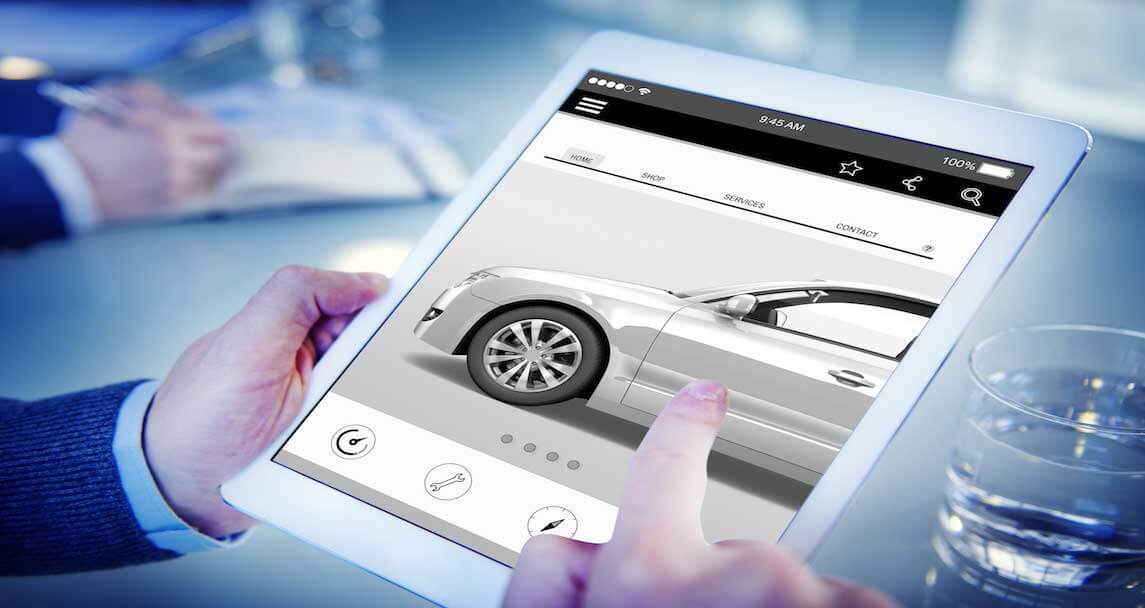How can a website help the automotive industry | Web Design Agency

The automotive industry is no stranger to the fast lane, particularly when it comes to the highly competitive nature of the business.
In fact, according to recent studies, the industry is geared up and expected to spend over $14 billion by 2020 on digital advertising expenditure in order to position themselves favourably amongst consumers.
There is an average of 24 touchpoints in a typical customer’s car shopping experience, with 19 of these being digital, a functional, engaging and responsive website is one of the most critical digital pit stops that must be considered in the race to win the customer.
In the US alone, over 34 million consumers are expected to purchase a car in the next 6 months. However, their journey begins long before they sit in the driver seats for the first time. More often than not, a website is the first port of contact for a consumer interested in purchasing a car. What may be surprising is that the prospective buyer is not just simply visiting one website for their preferred brand or to compare makes and models that they are interested in, instead 78% of consumers actually browse 6-20 sites to gather information and develop an opinion before they continue on throughout the buyer’s journey. Therefore, it is imperative that the automotive industry employs the following online and digital marketing strategies for their websites in order to be equipped with a competitive edge.
Search Engine Optimisation
Recent studies suggest that 34% of potential buyers start their shopping experience with a simple Google search. In fact, an online search is the highest ranked source for consumers to begin researching in comparison to social media sites, local dealers, print classified or advertisements. With a large portion of consumers starting with a search query, being in pole position on any given search engine should be a priority and is achieved through implementing a comprehensive search engine optimisation strategy. Local search engine optimisation is also particularly essential for the automotive industry. In fact, 78% of location-based searches on mobile devices result in an offline purchase, while 76% result in a phone call.
In fact, global automotive brand, Kia Motors, did exactly this when they recently overhauled their website in an attempt to ensure they provided the ultimate relevance and engagement for their consumers. The company recognised that through on-page, off page and localised SEO efforts they were providing a more informative experience for potential prospects, as well as ensuring the KIA website and brand maintained a prime position on search engines in the key research phase on the path to a sale.
Content Marketing
Relevant and engaging content can be one way to improve your search engine rankings to assist when prospective customers are researching, however, producing quality content for your website can also help improve customer engagement. According to some recent studies, 95% of consumers actually attribute quality content to the perception of a business being more trustworthy and reliable, while 60% of people seek out about a product after reading about it.
Kia Motors Australia understood these statistics, and through their recent website upgrade executed a solid content marketing strategy. There was a strong focus on educational content including vehicle specifications and pricing tools to assist the customer with the decision making process, as well as creating content that would appeal to customer’s lifestyle interests for a more personalised and individualised online experience that engages the customer through the entire customer journey and beyond the initial research phase.
Mobile Responsiveness
On the path to purchasing a car, 71% of the touchpoints occur on a mobile device, highlighting the necessity for websites to be mobile responsive. In fact, for the Kia Motors brand, over 40% of their consumer base interacts with their Australian website via a tablet or smartphone. This prompted the company to ensure that their website has been optimised for personalised experience through mobile-first design which correlates with the desktop version.
This ensures consistency for the consumer and reduces any potential risk of errors with content which can have a detrimental effect on SEO. Similarly, Lexus also recently ensured their website was mobile responsive to ensure a seamless and coherent experience for their consumers, which resulted in a 49% increase for mobile sessions. Thus, through optimising the desktop website to be mobile responsive, automotive brands are providing their consumers with a consistent and engaging experience through every single digital touchpoint.
Customer Experience and Innovation
As the majority of the touchpoints in relation to the consumer journey are digital, an automotive website can be a deciding factor for prospective buyers. In fact, digital is key to driving engaging experiences and challenging perceptions. A recent study even confirmed this idea by noting that online experience is ranked as the second most important factor in a consumer’s willingness to follow through with a purchase. Therefore, it is unsurprising that many automotive brands have been innovating their websites to provide unique experiences that are consistent with visiting a dealership.
Some studies suggest that the top automotive websites successfully engage over 50% of their online visitors through easy to use, yet comprehensive configurator tools that allow a consumer to customise and personalise their dream car. More so, automotive websites who successfully incorporate such tools have 20% more visitors than their competitors and a 60% increase in locating dealers. In fact, Lexus overhauled their ‘build and price’ section, allowing potential consumers to build their desired car from more than 700 variables. While this feature is extremely complex from the back end of the website, it is intuitive and user-friendly from the front end, allowing the potential buyer to choose from engine variants, enhancement packs, paint options and more in real time. In fact, this overhaul has resulted in a considerable increase in website traffic.
Online Web Chats
Online web chats are another way some automotive websites aim to improve the customer experience throughout the entire customer journey, with an overwhelmingly positive response from consumers. According to one recent study, 68% of consumers who are interesting in purchasing a car, are in favour of the opportunity to ask questions and speak to their local dealership in real time via an online web chat or chat bot service. In fact, during 2012, one online chat platform provider specific for the automotive industry, provided over 5 million chats between dealerships and consumers, representing a 70% increase from the previous year.
Digital platforms, especially a brand’s website is an essential aspect of the customer journey. In fact, 70% of the entire buying process is finalised before consumers engage with a sa
lesperson in a dealership. A thorough and well-designed website that is search engine optimised, mobile responsive and has innovative features to promote customer experiences, enables consumers to learn more and engage with brand and products in a more convenient and personalised way. Such strategies digitally transform the customer experience and aims to enhance the customer journey to facilitating a purchase.
At RGC Digital Marketing, we provide a range of marketing and advertising services that focus on connecting consumers to brands. To find out how our team can improve consumer engagement through your website, please contact Richard on (02) 8883 2988 or email richard@rgcadvertising.com.au


